Today, and more than ever, project owners, project management consultants, supervision consultants, and contractors are required to adopt best practices when it comes to managing their construction projects. No organization can afford to have its projects going out of control. Projects that finish late and over the budget result from failure to manage and control those projects.
In an engineering and construction project, the organization has the highest exposure to the damages and losses associated with project delays and budget overruns is the organization with the weakest project controls. Why? Because this organization is the least capable of the project organizations to support their compensation claims or to defend themselves against claims raised against them.
Overcoming the high costly risk of project failure, a project control system (PCS) needs to be implemented to provide real-time single version of the truth performance status reporting. For the PCS reporting to be trustworthy, it should have access to all project management data that can be traced to its source transaction or record where this data was captured.
In addition, a project control system (PCS) performance reporting should not exclude any of the functions needed to manage the delivery of a construction project. That is to say, a PCS should include modules to address the performance reporting requirements of the project document management, schedule and resources, budget and cost, risk, change, quality, health, safety, security and environment (HSSE), procurement, claims, communications including interfaces, and progress narrative. Those modules should be integrated to provide a single version of the truth when it comes to monitoring, evaluating, analyzing, and reporting the construction project performance.
Document Management Module
The implementation and management of a project control system (PCS) require capturing information from the different project documents as well as storing and using documents and pictures during the project’s execution. Regardless of the project document system used by the project, the PCS team needs to maintain their document system to upload, store and use the documents needed for the PCS.
The documents folder structure used by the PCS team usually aligns with the PCS modules as well as the progress periods. In other words, there are folders used to store and upload the documents that were used to launch the project control system. In addition, there are folders for each progress period to capture the documents and pictures associated with the progress achieved during that period.
The uploading and storing of project documents along with their attributes into PMWeb enables the PCS team to report on their status as well as all revisions made to those documents. In addition, the PCS team can search for documents by using keywords that were either embedded in the file name, added as document attributes, or even included in the content of the uploaded documents as long as the file type is searchable.
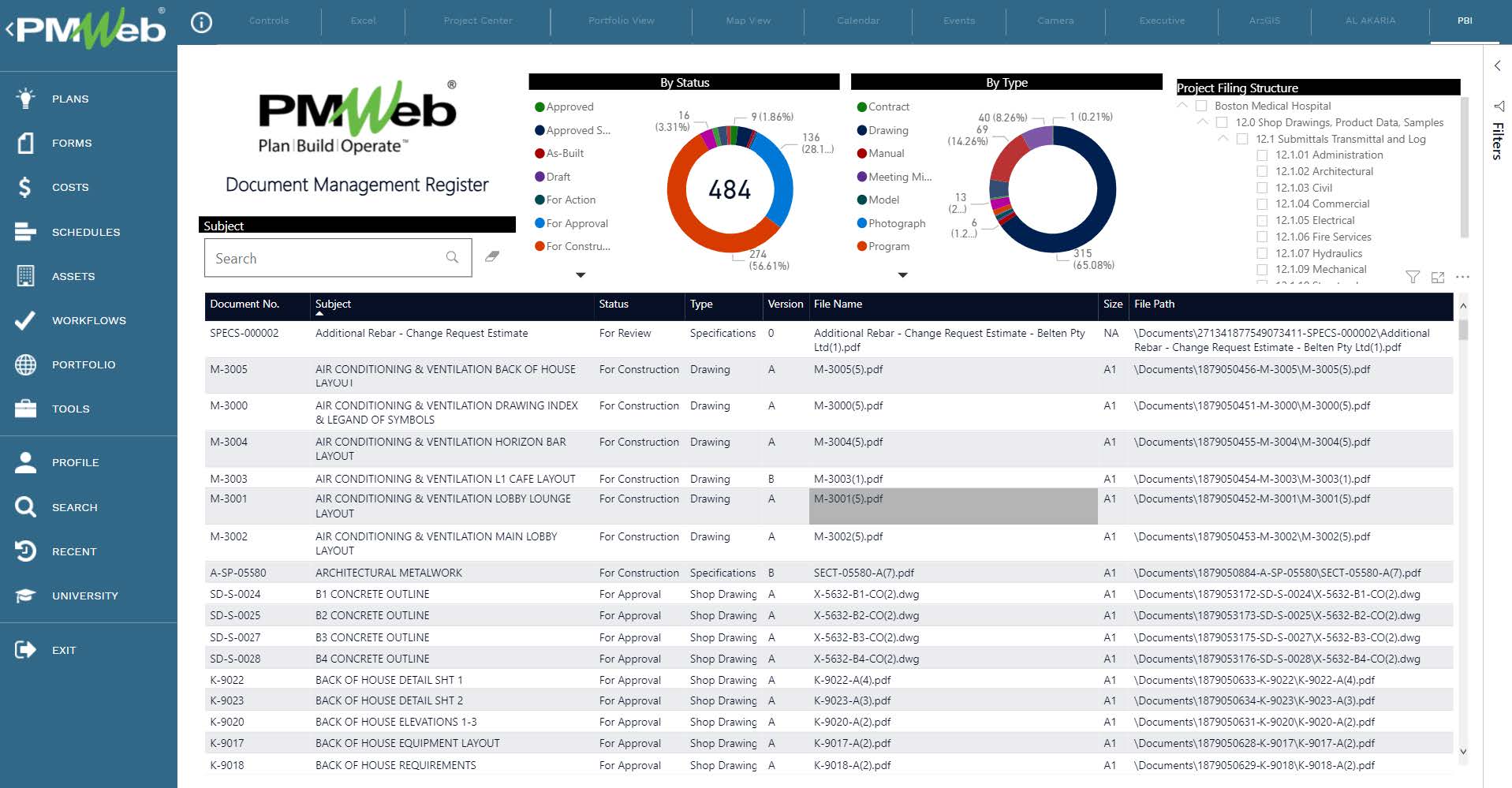
Schedule and Resource Module
In general, a project control system (PCS) is a practice that has originally evolved from the planning and scheduling practice for construction projects. Therefore, managing, monitoring, controlling, evaluating, and reporting a project schedule performance is always a key component of any project control system (PCS). This also explains why integrating all processes of the different PCS functions with the project’s work breakdown structure (WBS) and project schedule activities is a must requirement for an effective PCS.
The baseline project schedule developed by the contractor needs to adhere to the Work Breakdown Structure (WBS) levels included in the project schedule specifications as well as include the interim milestone dates, and interface points with other contractors or external entities included in the project schedule specifications. Of course, the contractor can further detail the WBS levels and add more milestones as well as interface points to have a comprehensive project schedule that can be used to plan the project’s execution as well as monitor, control, evaluate and report on the achieved performance.
For the project’s constraints associated with government permitting authorities such as civil defense, electricity, and water, municipality, and others as well as those permits and approvals issued by professional bodies for structural stability and others, the baseline project schedule should incorporate those constraints in the integrated project schedule plan. The PCS team needs to have access to the current status of those permits and no-objection certificates.
The project schedule for construction projects always includes the requirements for managing labor and equipment resources. The resources loaded on the schedule’s activities help define the labor and equipment resources site deployment requirements during the project’s duration. Unlike other types of projects where resources can be deployed on an as-needed basis, on construction projects, those resources need to be fully deployed on the project. For many countries, the labor resources needed to be employed for each specific project, and government work permits need to be issued.
Of course, the baseline and updated schedule submissions should comply with the project schedule specifications, which are part of the project’s contract documents. A review checklist should be used to verify that the schedule submission complies with the requirements set in the contract documents. Sometimes, the schedule quality review needs to comply with the USA’s Defense Contract Management Agency (DCMA) 14-Point Assessment.
The actual performance of the project’s schedule is reflected in the updated project schedule submissions. The weekly and monthly schedule update submissions should be accompanied by the necessary supportive documents. Those include as a minimum the daily reports formally submitted by the contractor to report the progress on site. The daily reports are usually accompanied by site progress photos. In addition, meeting minutes, submittal register, long lead procurement register, request for information (RFI) register, and other documents might be needed for the schedule update submission.
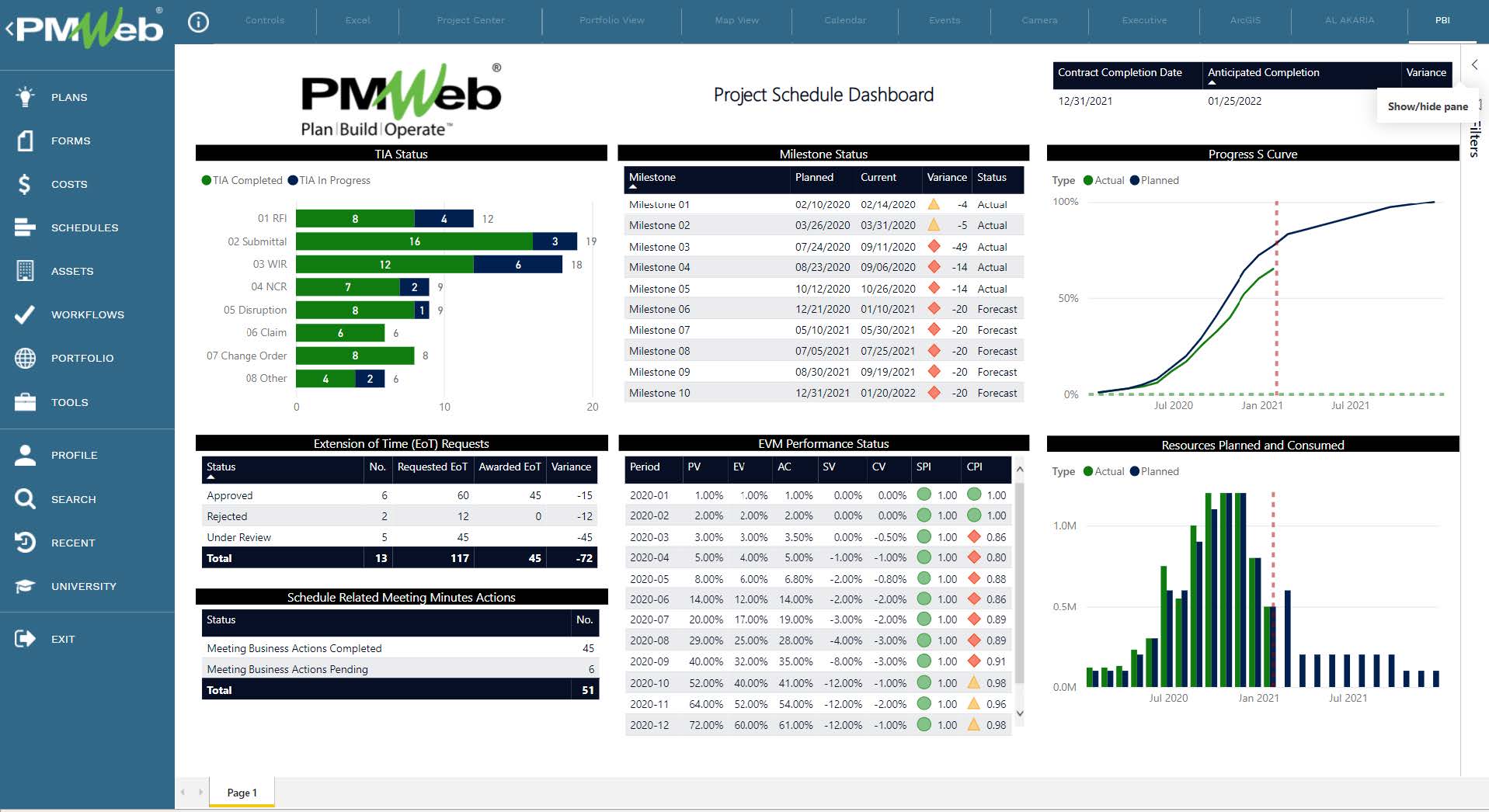
Budget and Cost Module
The work breakdown structure (WBS) becomes the basis for formalizing the project’s scope of work for which it also becomes the basis for estimating the project cost. The cost estimate line items for each WBS level link with the associated project schedule activity to ensure that the scope of work included in the project schedule has been accounted for in full in the cost estimate and vice versa.
The approved cost estimate is a critical component of the project control system (PCS) as it is the basis for establishing the project budget and procurement of the project’s scope of work that will be outsourced.
In addition, the project schedule is loaded by the value of each activity as per the bill of quantity (BoQ) or schedule of values (SoV) of the awarded contract agreement. Those values are known as the selling price values for which they will be known by the project owner, project management consultant, supervision consultant, and contractor. Neither the project owner budget nor the contractor baseline budget will be loaded on the schedule as this is considered to be a confidential document for the parties of the contract.
The cost-loaded schedule helps create the project cash flow and planned early and late dates progress curves. In addition, for some projects, the interim payment certificate (IPC) amount is calculated from the approved percent complete values captured in the project schedule monthly update. For other projects that do not adopt this approach for determining the interim payment certificate (IPC) amount, there is the requirement to measure the actual work in place to determine the amount of the interim payment certificate (IPC).
Regardless of the approach used in assessing the interim payment certificate (IPC) amount, there is always the requirement to formally submit the interim payment certificate (IPC). The submission should include the work inspection requests (WIR), static and rotary equipment inspection checklists, insurances and bonds register, and other checklists to confirm that the contractor has complied with the contract agreement conditions as it relates to the completed works as well as other obligations set in the contract agreement.
The earned value method (EVM) performance reporting is one of the proven methods to report the performance of the project budget and cost. The PCS team uses the project’s baseline budget at completion (BAC) and planned value of budget spending (PV). The planned spending should be aligned with the baseline project schedule. In addition, the PCS team should be provided with details on the revised project budget including details of all adjustments and transfers made to the baseline budget. The project budget excludes the allowances made for the management reserve as well as the profit and home-office overhead which are usually managed at the contractor’s head office.
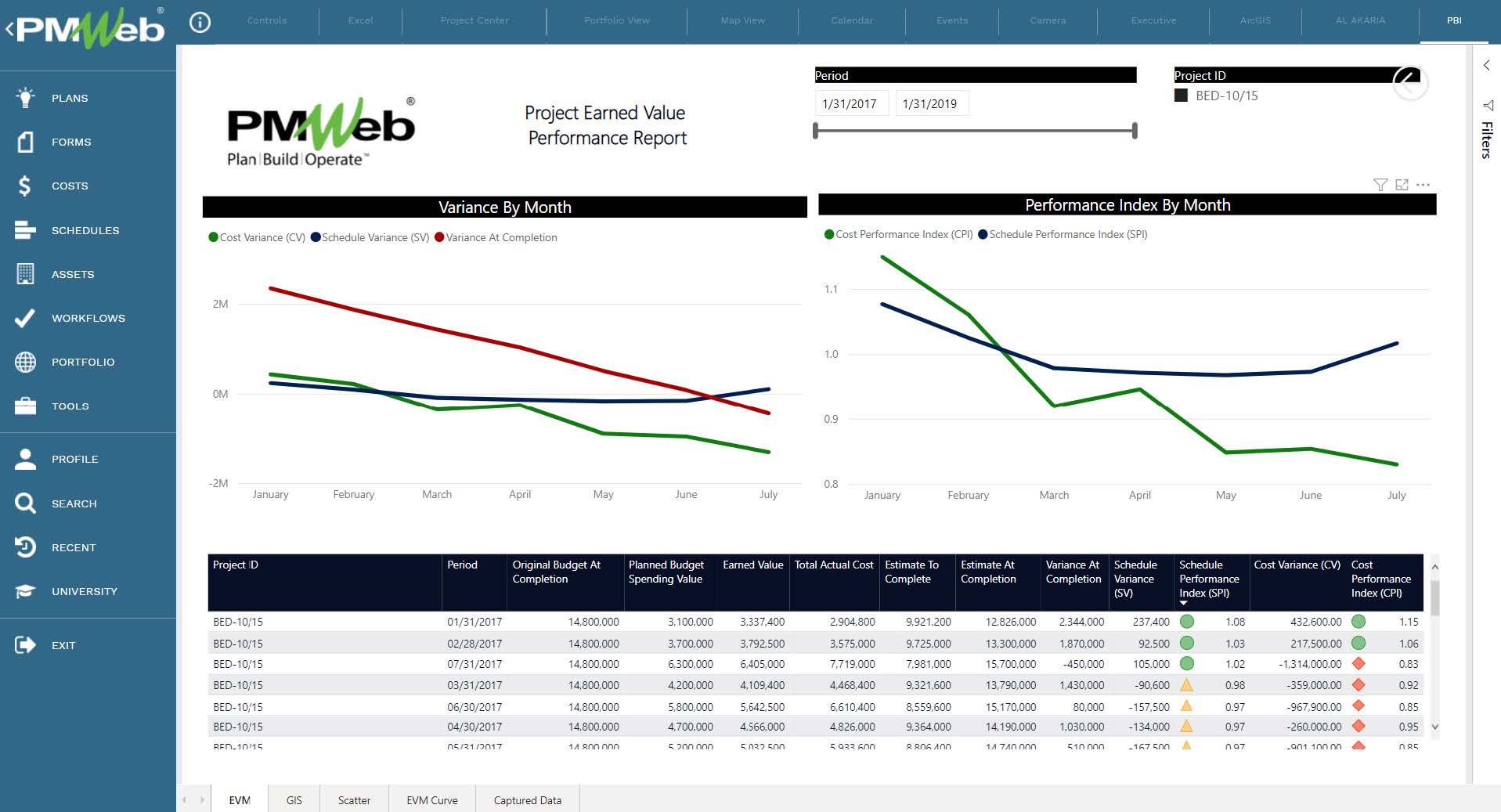
Risk Module
To address the assumptions made while developing the project schedule, the contractor is required to submit a risk register detailing the identified project risks as per the agreed risk breakdown structure (RBS) or categories. For each risk, the contractor needs to provide the pre-mitigation occurrence likelihood, impact, and exposure, the proposed risk response action to mitigate the risk exposure, and the post-mitigation occurrence likelihood, impact, and exposure. For each identified risk, the contractor needs to identify the Work Breakdown Structure (WBS) level and project schedule activity associated with the risk. This is also a requirement should a Monte Carlo simulation need to be run on the project schedule.
The risk register is also one of the required documents to be submitted along with the baseline schedule as well as periodical schedule updates. The contractor should maintain the risk register and update it with newly identified risks as well as inactive risks.
To manage risks that would occur, which are also known as issues, the PCS team should implement a proactive Early Notification Warning (EWN) to capture the details of those issues and associate them with the risk category that they are associated with. On construction projects that follow the FIDIC 2017 Red Book, there are around thirty-two classifications for those EWNs. Some could entitle the contractor to be compensated for delay, additional cost, or both, or the contractor is not entitled to any compensation. Those early warning notifications that entitle the contract to compensation could lead to a change or variation order to the contract between the project owner and contractor as well as the contract agreements between the contractor and his subcontractors and vendors.
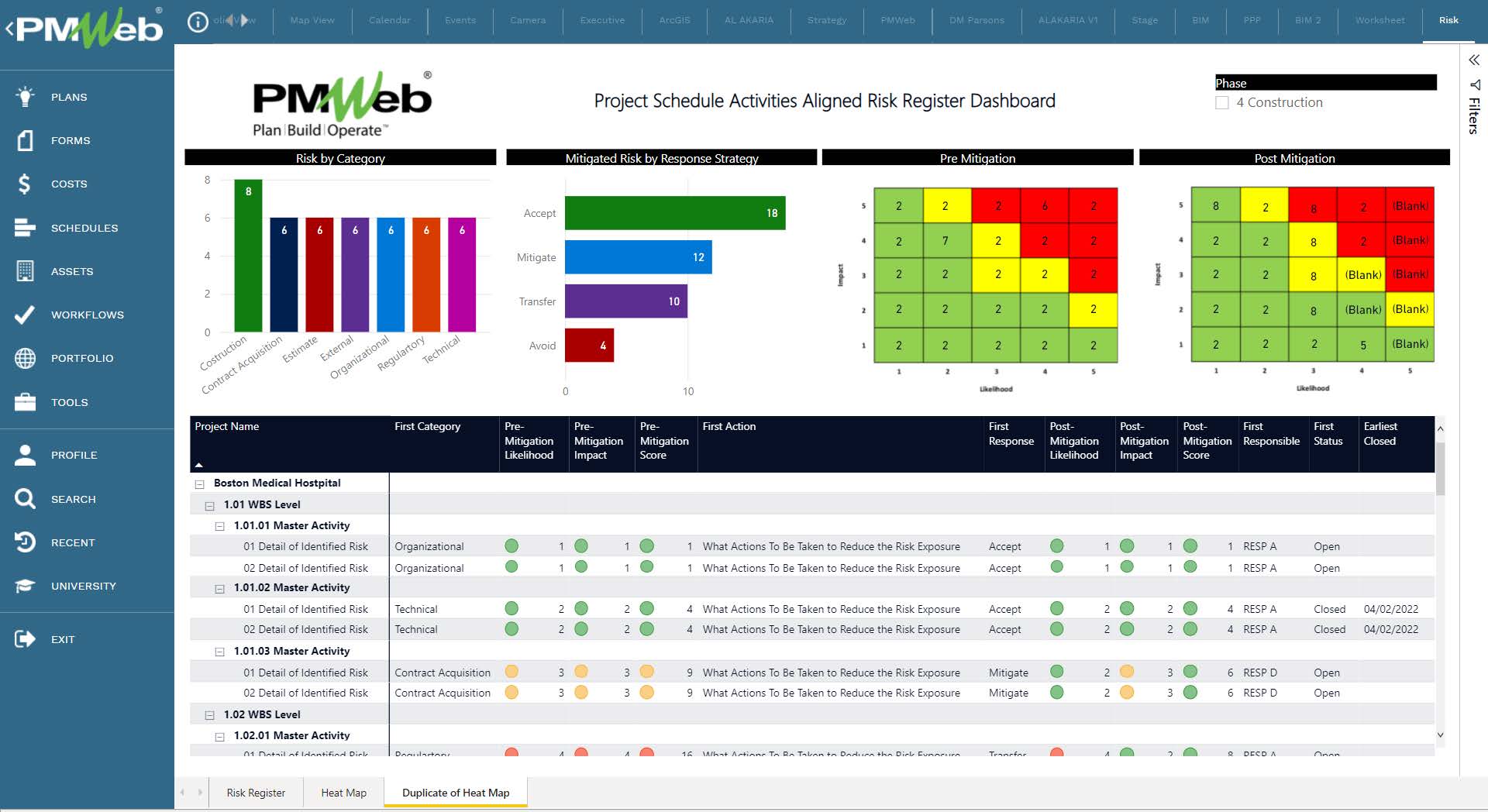
Change Management Module
The project control system (PCS) needs to report on all changes to the original project’s scope of work. There are many reasons for project changes including those that have resulted from the early warning notifications (EWN) or potential changes or changes that are directed by the project owner. Changes that could be classified as in-scope or out-of-scope changes could have an impact on the project’s completion, budget at completion, or both.
The PCS should enable reporting on all potential changes, approved, pending, and disputed commitment change/variation orders, budget adjustments, and change events to associate commitment changes with their relevant budget adjustments. In addition, the PCS change management module should report on the changes for revenue or income contracts. Examples of revenue contracts are the contract agreement between the contractor and project owner if the PCS was managed by the contractor, the agreements that project owners have with buyers of the project assets or having long-term lease agreements, or the agreements that the Special Purpose Vehicles (SPV) have on PPP projects for benefits realization.
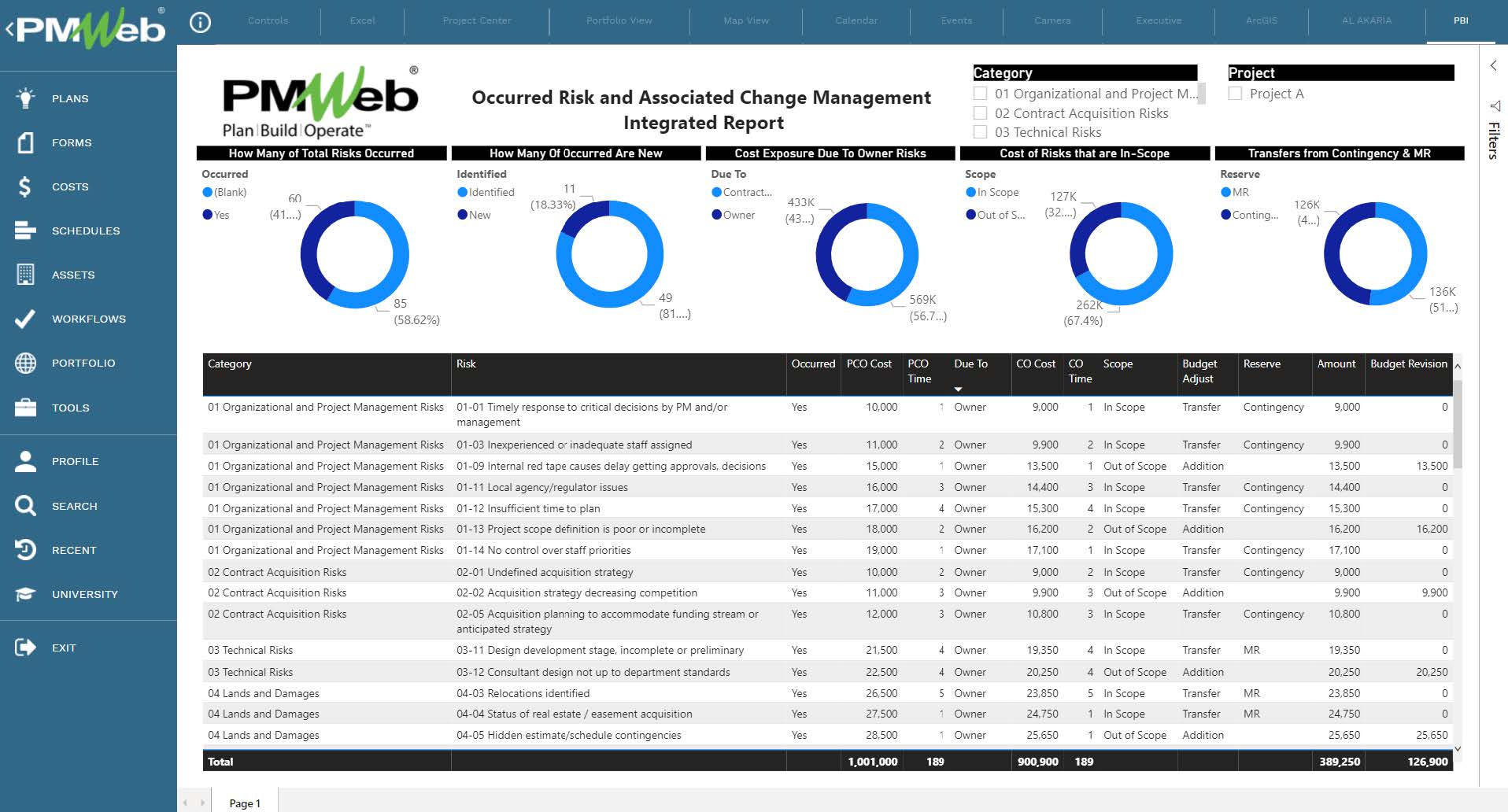
Quality Module
To justify the actual completed work in place reported in the updated schedule, the PCS team needs to have access to the work inspection requests (WIR), material inspection requests (MIR), concrete pouring reports, inspection requests for rotary and static equipment, and other related transactions of quality control processes. In addition, the PCS team needs to have access to all non-compliance reports (NCR) issued to the contractor and for which have an impact on the project’s progress.
The integrated project schedule should also include the many tasks needed for the project’s testing and commissioning before it can be considered substantially completed and can be occupied by the end-users. The beneficial occupancy, the building is sealed, energization, HVAC balancing, and other testing and commissioning milestones are examples of the milestones that a project owner might require the contractor to incorporate into the integrated project schedule. The PCS team needs to have access to the pre-startup, functional and performance, pre-energization, and pre-commission inspection checklists to update the testing and commissioning activities.
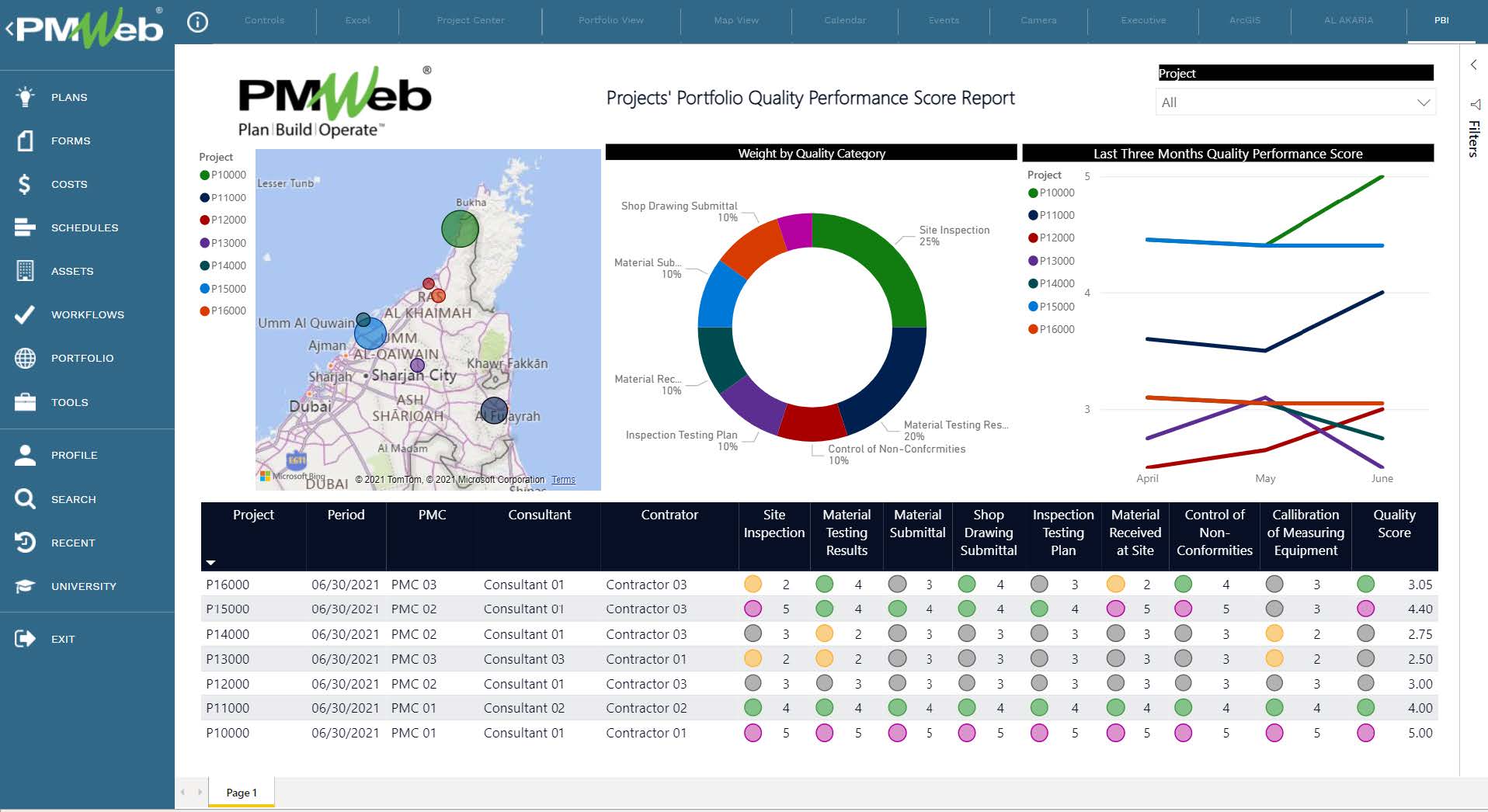
HSSE Module
The PCS team needs also to have details of the Health, Safety, Security, and Environment (HSSE) functions. The contractor could be stopped from doing work on the project if the contractor fails in complying with the HSSE practices implemented on the project. As a minimum, the PCS team should have a register of all safety incidents and safety violations issued to the contractor. The data captured from the reported safety incidents and labor manhours captured in the daily report becomes the basis for reporting the Lost Time Injury (LTI), Lost Time Injury Frequency Rate (LTIFR), and Lost Time Injury Severity Rate (LTISR) measures.
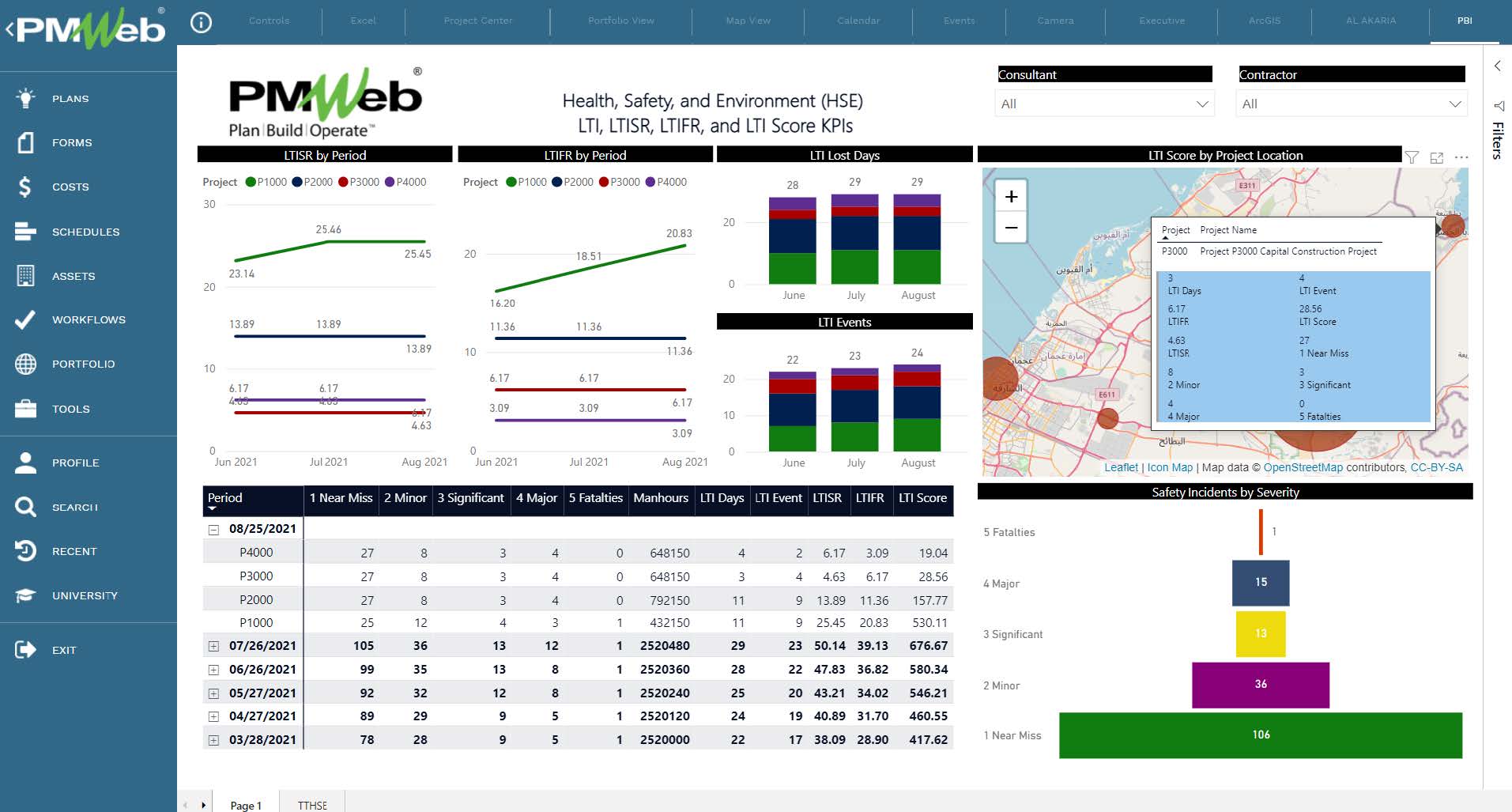
Procurement Module
The dates for the contractor to procure material, equipment, and subcontract services should be aligned with the dates set in the integrated project schedule. Accordingly, the PCS team should be made aware of the planned dates for the issuance of tender queries for the outsourced scope of work, award of those contracts, and actual deliveries to the construction site. For long lead equipment and material items, the PCS team needs to have details of the manufacturing dates, factory testing, shipping, arrival dates, site delivery dates, and site testing and acceptance.
The details of all selected subcontractors and vendors should become part of the project directory that the PCS Team would usually maintain for the project. The directory includes the contact details for the project owner, project management consultant, design and site supervision consultants, other consultants, contractors, fire brigades, nearby hospitals, subcontractors, vendors, and other project stakeholders.

Claim Module
Since it rarely happens that a construction project completes without having the risk of claims, the PCS team needs to support the contract team in preparing the delay analysis associated with the claim event using what is known as the Time Impact Analysis (TIA). In addition, the PCS team might also need to provide the details for lost productivity claims using what is known as the Window-Analysis. The summary of that analysis is usually summarized in what is known as the Extension of Time (EOT) submission.
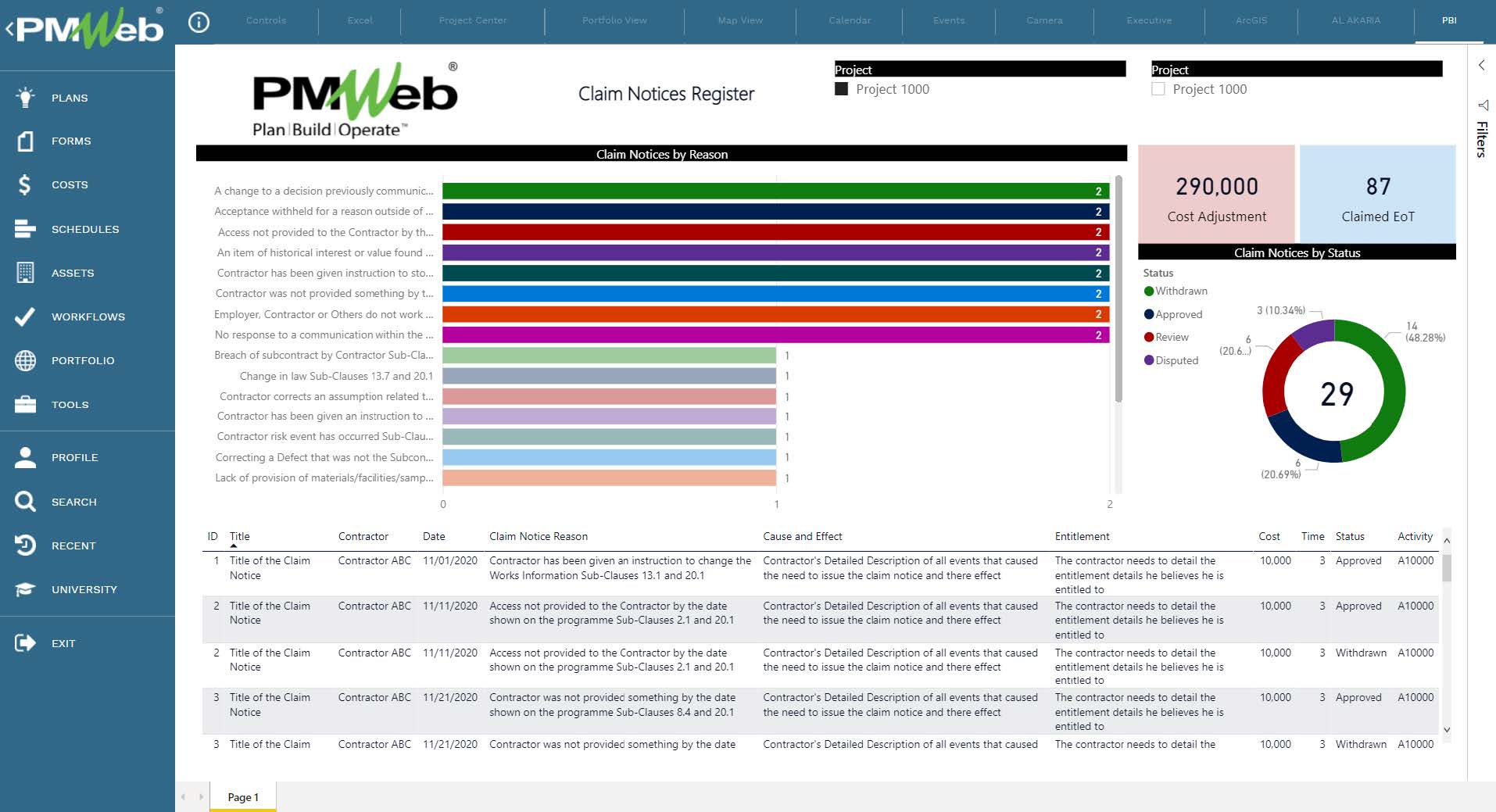
Communication and Interfaces Module
The time-impact and lost-productivity analysis usually requires the PCS team to have access to project communication associated with the different claim events. These could include the Request for Information (RFI), Site Work Instructions (SWI), Confirmation of Verbal Instruction (CVI), Engineer’s Instruction (EI), Correspondence, Email Communications, Meeting Minutes, and other types of project communications.
In addition, the PCS team would need to have access to the project’s document management systems where project documents are stored in the designated folders. The PCS team might need to search those documents for records that are associated with the claim events being finalized.
Similar to all other project groups, the PCS team might have its internal meetings or meetings for project progress review and other related PCS functions. In addition to the meeting minutes that are generated for the different meeting types, the PCS team would have many informal or ad-hoc internal meetings or meetings with other stakeholders. Unlike the online meetings like those with MS Teams, Zoom, and other platforms, the PCS team ad-hoc meetings have different actions that those who have a role in those meetings need to update and provide details on whether other PCS team members were online or not.
For projects where multi-prime contractors are involved in delivering the construction project, reporting the status of all interface points is one of the tasks that the PCS team must perform. The integrated project schedule should include activities for all internal and external interfaces. The duration of those activities represents the duration needed to carry out all inspections, documentation, and approvals of those interfaces.
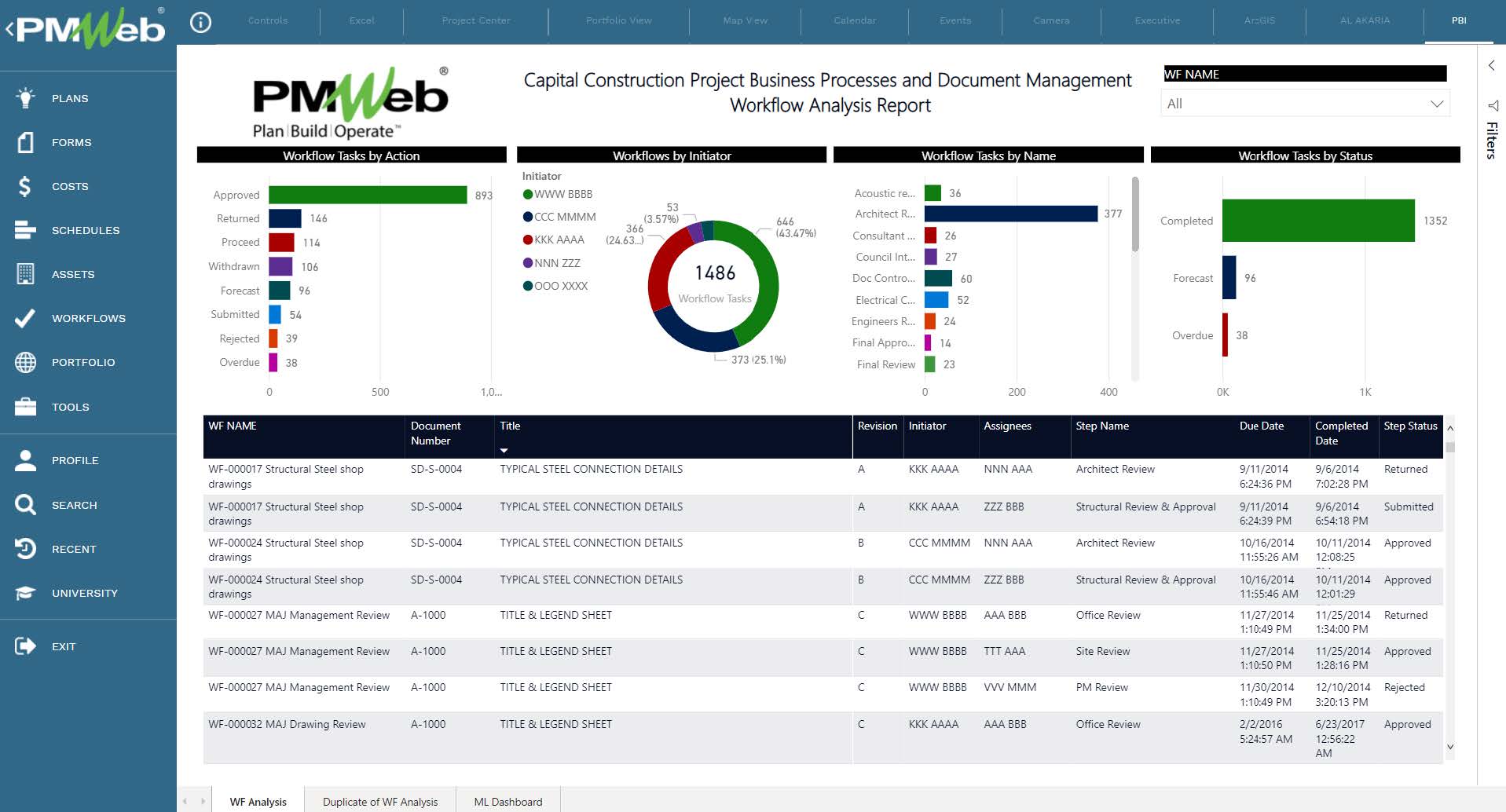
Narrative Module
Another requirement for the PCS team is the function of capturing what is known as the progress narrative, which the PCS team uses to explain the different progress reports that they need to share with the different project stakeholders. This requires having pre-defined templates that allow the PCS team to provide the content for the different sections of the progress reports. In addition, those progress templates should have data fields with a predefined list of values to standardize the reporting of project performance.
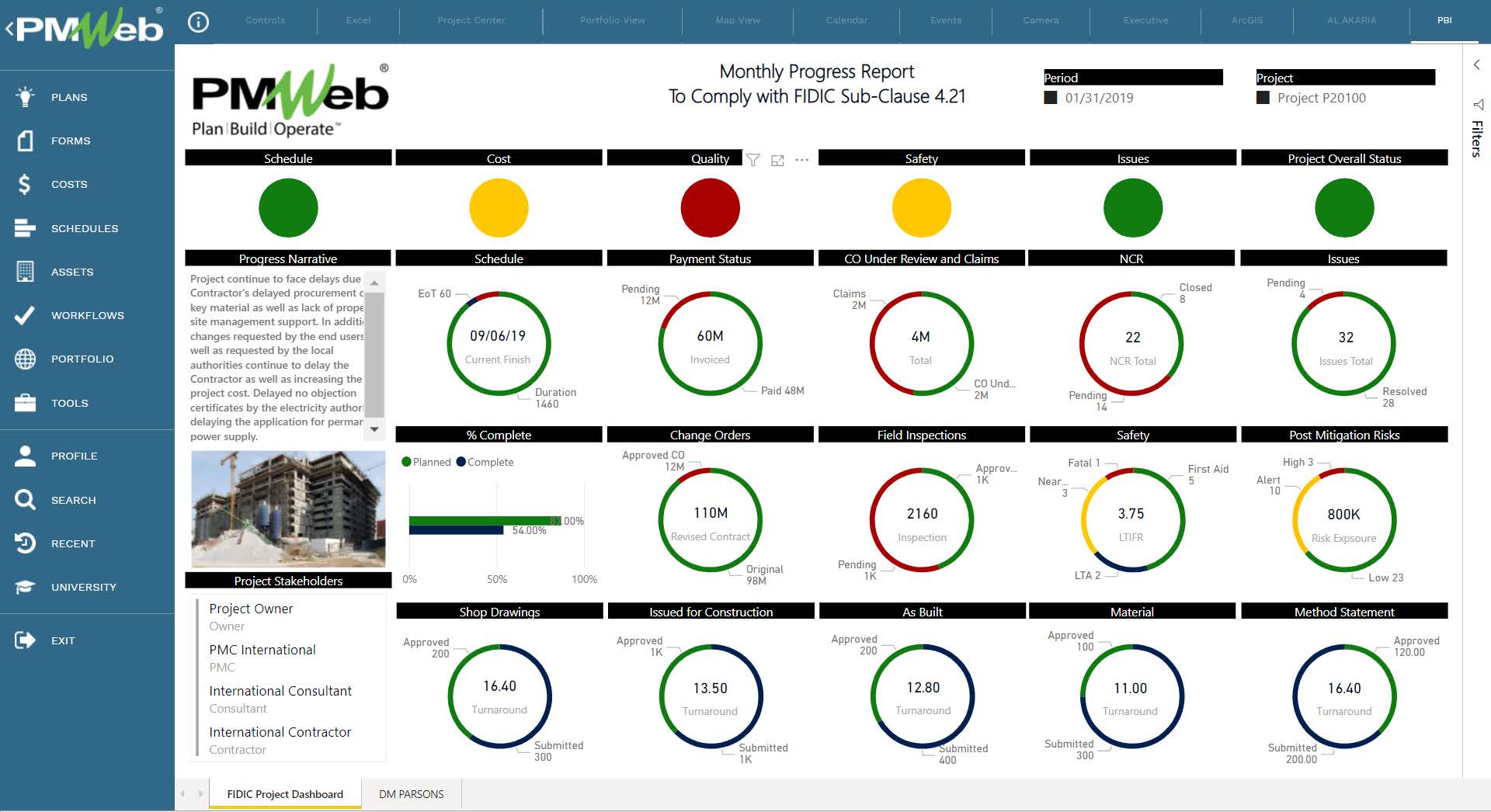
Reference
The content of this article was extracted from the book titled “Let’s Transform: Enabling Digital Transformation of Capital Construction Projects Using the PMWeb Project Management Information System – 2nd Edition”. The book was written by the author of the posted article, Bassam Samman.
The book provides project owners with oversight on how technology available today can support their efforts to digitally transform the management of their projects’ portfolios. For each capital project life cycle stage, PMWeb is used to detail how the relevant project management business processes can be digitalized to enforce transparency and accountability in delivering projects. In addition, MS Power BI was used to show how the real-time, trustworthy data captured in PMWeb can be aggregated, modeled, monitored, evaluated, analyzed, and reported on anytime, anywhere using any device.



